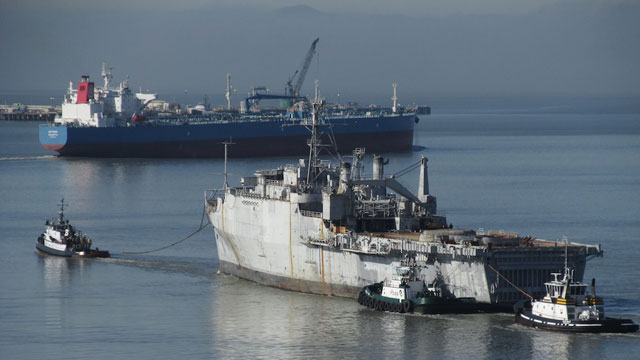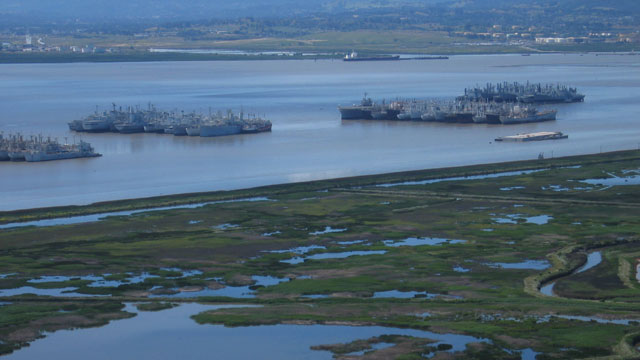
When the retired Navy tanker Willamette passes under the Carquinez Bridge this week, it’ll be just the latest reminder that we’re drifting toward the end of an era.
Keepers of the U.S. government’s National Defense Reserve Fleet anchored in Suisun Bay say that they’re about two years ahead of schedule in clearing out ships that no longer have a future on the high seas.
The Willamette’s final voyage, under tow to a Texas scrapyard, will leave fewer than a dozen ships in Suisun Bay designated for “non-retention,” which means that the government has no plans to use them, even in a crisis. About an equal number of ships that could still be revived will remain behind.
At its peak, in the Cold War environment of the early 1960s, there were more than 500 ships “mothballed” at Suisun, which is just northeast of San Francisco Bay, near the town of Benicia. More than 100 remained as recently as 1999, when the Clinton administration downsized the Navy, according to Joe Pecoraro, who manages the Suisun fleet for the federal Maritime Administration, or MARAD.

The anchorage lies cheek-by-jowl with Suisun Marsh, the largest salt marsh on the West Coast. And as lead-based paint began to flake off of the older ships, leaching toxic metals into the water, and they were seen increasingly as a threat to the bay’s water quality, local congressional representatives started putting pressure on MARAD to get rid of the rusting hulks. State regulators and environmental groups sued in federal court under various environmental laws and in 2010, won a consent decree that accelerated removal of the ships and forced changes in the way they were being maintained.